
|
|||
10 Serial Killers Who Were Never Got Caught : Getting Away with Murder
Source : http://www.allthingscrimeblog.com/
“Getting away with murder” now serves as a euphemism for avoiding the consequences of just about any kind of bad behavior. In its most literal sense, however, the phrase points to an especially troubling phenomenon — serial killings committed by psychopaths who somehow manage to avoid being caught and convicted of their crimes. The Zodiac Killer, who terrified the San Francisco Bay Area in the late 1960s and early 1970s with a string of murders accompanied by bizarre cryptograms and letters to the press, is probably the most famous murderer who was never captured. The Zodiac is not alone, however. Our recent history is littered with unsolved mass murders. The following rogue’s gallery — presented in no particular order, since they are all equally hideous — lists some of the ones who got away with the worst crimes imaginable. 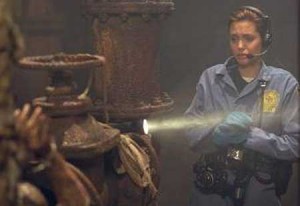
The Bone Collector is an unidentified serial killer from the area known as the West Mesa of Albuquerque, New Mexico. In 2009, the chance discovery of a human bone by a dog-walker led police into something closer to an archaeological dig than a typical crime scene. The remains of eleven women, later determined to have been prostitutes, were slowly excavated from the area — which turned into the largest crime scene in U.S. history. Yet not a shred of promising evidence was ever unearthed from this macabre dumping ground — no DNA, no potential murder weapons, no personal clues, nothing at all. Sex workers in the area still live in fear of the killer, even though no murders associated with him have been reported for several years. To this day, the Bone Collector’s identity remains a complete mystery. On February 2, 2009, a woman walking a dog found a human bone on the West Mesa of Albuquerque, New Mexico metropolitan area, and reported it to police. As a result of the subsequent police investigation, authorities discovered the remains of 11 women[1] and a fetus buried in the area. All the women were young; most were Hispanic, and most were involved with drugs and prostitution. Police suspect that the bodies were all buried by the same person or persons, and may be the work of a serial killer sometimes referred to as the West Mesa Bone Collector. Authorities also believe that the murders are closely linked to the annual state fair, which attracts large numbers of prostitutes to the area in the fall 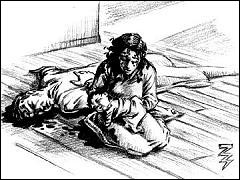
The Axe Man of New Orleans was responsible for at least eight killings in New Orleans, Louisiana (and surrounding communities) from May 1918 to October 1919. Typically, the back door of a home was smashed, followed by an attack on one or more of the residents with either an axe or a straight razor. The crimes were not considered linked to robbery, since no items were removed from the victims’ homes. The Axe Man was never caught or identified, and his crime spree stopped as mysteriously as it had started. He wrote a notorious letter to address the public, which was printed in the newspapers. Beneath the heading, “Hell, March 13, 1919,” the Axe Man explained that he was a non-human spirit, something close to the “Angel of Death,” and he vowed to take more victims before he departed earth for his native “Tartarus.” He also made it clear that music was of crucial importance: “I am very fond of jazz music, and I swear by all the devils in the nether regions that every person shall be spared in whose home a jazz band is in full swing at the time I have just mentioned. If everyone has a jazz band going, well, then, so much the better for you people. One thing is certain and that is that some of your people who do not jazz it on Tuesday night (if there be any) will get the axe.” 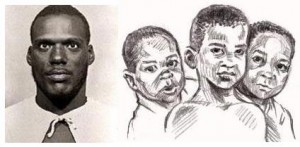
Charlie Chop-Off was active in Manhattan between 1972 and 1974. He killed five black children, and attacked another who he left for dead. The nickname comes from the genital mutilation inflicted on the male victims. A principal suspect, Erno Soto, was arrested and did end up confessing to one of the murders. But Soto was considered unfit for trial and sent to a mental institution instead. The case is still considered open. In the early 1970s, young boys were being attacked and murdered in Manhattan's Harlem area. It appeared to be some type of fetish or torture crime, because when their bodies were found, the penises had been mutilated or removed. Clearly, this perpetrator was a sexual deviant and experts speculated that he hated his own manhood. 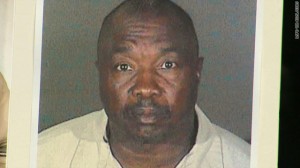
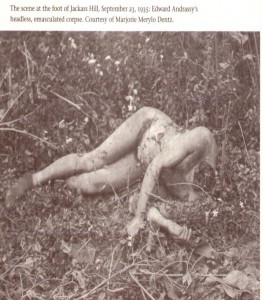
The Cleveland Torso Murderer (also known as the Mad Butcher of Kingsbury Run) was an unidentified serial killer who killed and dismembered at least 12 victims in the Cleveland, Ohio area in the 1930s. The Torso Murderer always beheaded and often dismembered his victims, sometimes also cutting the torso in half — in the style of the Black Dahlia corpse. Most of the male victims were castrated, and there was also evidence of chemical treatment being applied to their bodies. Although two suspects were investigated for these horrifying crimes, with Elliot Ness in charge of Cleveland police at the time, no one was ever convicted of the murders. The official number of murders credited to the Cleveland Torso Murderer is twelve, although recent research has shown there may have been more. The twelve victims were killed between 1935 and 1938, but some, including lead Cleveland Detective Peter Merylo, believe that there may have been 2,013 or more victims in the Cleveland, Pittsburgh, and Youngstown, Ohio, areas between the 1920s and 1950s. Two strong candidates for addition to the list of those killed are the unknown victim nicknamed the “Lady of the Lake”, found on September 5, 1934, and Robert Robertson, found on July 22, 1950. The victims were usually drifters whose identities were never determined, although there were a few exceptions (victims numbers 2, 3, and 8 were identified as Edward Andrassy, Flo Polillo, and possibly Rose Wallace, respectively). Invariably, all the victims, male and female, appeared to be from the lower class of society—easy prey in Depression-era Cleveland. Many were known as “working poor”, who had nowhere else to live but the ramshackle shanty towns in the area known as the Cleveland Flats. The Torso Murderer always beheaded and often dismembered his victims, sometimes also cutting the torso in half; in many cases the cause of death was the decapitation itself. Most of the male victims were castrated, and some victims showed evidence of chemical treatment being applied to their bodies. Many of the victims were found after a considerable period of time following their deaths, sometimes a year or more. This made identification nearly impossible, especially since the heads were often not found. During the time of the “official” murders, Eliot Ness held the position of Public Safety Director of Cleveland, a position with authority over the police department and ancillary services, including the fire department.[1] While Ness had little to do with the investigation, his posthumous reputation as leader of The Untouchables has made him an irresistible character in modern “torso murder” lore. 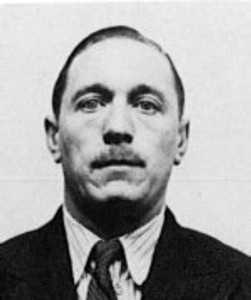
Jack the Stripper was responsible for the London “nude murders” of 1964 and 1965 (also known as the “Hammersmith murders” or “Hammersmith nudes” case). The similarities with the nineteenth century Ripper murders are obvious. The Stripper murdered at least six prostitutes, whose nude bodies were discovered around London or found dumped into the River Thames. Two additional victims are often attributed to him, although these do not appear to fit his modus operandi. The Stripper’s third and seventh victims were allegedly connected to the 1963 Profumo Affair. Also, some victims were known to be involved in London’s underground party and pornographic movie scene. Scotland Yard’s initial investigation included nearly 7000 suspects, which was supposedly narrowed down to just 20 men, then 10, and eventually only three. No one was ever convicted of the crimes, and the Stripper, for whatever reason, ceased his killing spree. Like the Jack the Ripper killings, the Stripper's reign of terror seemed to cease on its own, and there were few solid clues for police to investigate. Du Rose's favourite suspect was a Scottish security guard called Mungo Ireland, whom Du Rose first identified in a BBC television interview in 1970 as a respectable married man in his forties whom he codenamed Big John. Ireland had apparently been identified as a suspect shortly after Bridget O’Hara’s murder, when flecks of industrial paint were traced to the Heron Trading Estate, where he worked as a security guard. Shortly after the trace was made, Ireland committed suicide by carbon monoxide poisoning, leaving a note for his wife that read: “I can’t stick it any longer”, and finished, “To save you and the police looking for me I’ll be in the garage”. Whilst seen by many as a strong suspect in the killings, recent research suggests that Ireland was in Scotland when O’Hara was murdered, and therefore could not have been the Stripper. 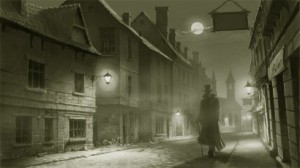
The Doodler was responsible for slaying 14 men and assaulting three others in San Francisco between January 1974 and September 1975. The nickname derived from the perpetrator’s habit of sketching his victims prior to having sex with them and then stabbing them to death. (One wonders whether the sketches ever made it onto the murderabilia market.) The perpetrator met his victims at after-hours gay clubs, bars and restaurants. Police zeroed in on a prime suspect in the case, who was identified by two of his surviving victims. Yet the cops were unable to proceed with an arrest, since the survivors (an entertainer, and a diplomat) refused to “out” themselves by way of testifying. The suspect, who never admitted his guilt, has never been publicly named, and the murders have faded into obscurity. Police questioned a young man as a murder suspect in the case but could not proceed with criminal charges because the three surviving victims did not want to "out" themselves by testifying against him in court. Among the stabbing survivors were a "well-known entertainer" and a diplomat. The suspect spoke freely with police, although he did not admit to the slayings. At the time, activist Harvey Milk publicly expressed empathy for the victims who refused to speak with police, stating "I understand their position. I respect the pressure society has put on them." To date, the suspect has never been publicly named or apprehended; very little information is available about the crimes. In 2013, a book by Reagan Martin was published about the events 
Bible John reportedly murdered three young women after meeting them at the Barrowland Ballroom in Glasgow, Scotland between 1968 and 1969. All three women were raped, strangled, and beaten to death. Just prior to the third murder, the killer supposedly took a taxi ride with the the victim and her sister. The sister said the man, who was named John, was soft-spoken and liked to quote from the Bible. As of 2013, the killer has never been identified, although the location and activities of known Glaswegian serial killer Peter Tobin strongly suggests that he may have been behind the killings. No proof of this has ever been established, however, and the case remains unsolved. On 23 February 1968, the naked body of 25-year-old nurse Patricia Docker was found by a man on his way to work in a lane behind Carmichael Place, Glasgow. The lane was only yards from her home in Langside Place. She had been raped and strangled. The previous night, she had told her parents that she was going out dancing at a nearby club, the Majestic Ballroom in Hope Street, Glasgow. Patricia had, in fact, gone to the Barrowland Ballroom for the over-25s night. It transpired that at some point during the night, Docker left the Majestic and ended up at the Barrowlands where it is thought she met her killer. It was several days after her murder that the police found out that she had actually gone to the Barrowlands. Focusing their investigation on the Majestic cost the police valuable time.[2] Pat's handbag and clothes were missing and despite months of investigation, neither were ever found. 
The Phantom Killer is responsible for the “moonlight murders” committed in and around the twin cities of Texarkana, Texas and Texarkana, Arkansas in 1946. The Phantom Killer is credited with attacking eight people, and killing five of them. The attacks occurred on weekend nights, nearly always three weeks apart, and always involved a .32 caliber pistol. The case terrified the entire area, and eventually inspired the 1976 horror film, The Town That Dreaded Sundown. Two of the earliest victims were able to give a description of their attacker — and it only served to heighten the sense of terror. They described a six-foot tall man with a plain white sack worn as a hood over his head, with holes cut out for the eyes and mouth. One suspect, a man named Youell Swinney, was imprisoned as a repeat car theft offender in 1947, and released in 1973. He was never charged with the crimes. Due to the killer’s hooded disguise, some in law enforcement and the press have speculated that the murders may have been the early work of the Zodiac Killer, but this has never been proven.
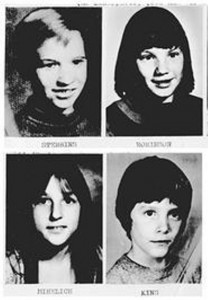
The Babysitter Killer of Oakland County, Michigan was responsible for the murders of four or more children — at least two girls and two boys — in the years 1976-77. The children were abducted and then held for time periods ranging from 4-19 days, before they were killed by either strangling, suffocation, or shooting. Two of the victims were also sexually assaulted with an object. These atrocious deaths caused extreme public fear bordering on mass hysteria, and triggered a murder investigation which was the largest in U.S. history at the time. The Detroit News offered a $100,000 reward for the killer’s apprehension. A number of suspects were investigated — some authorities even considered John Wayne Gacy to be a likely perpetrator. However, the murders remain unsolved. During a 13-month period, four children were abducted and murdered with their bodies left in various locations within the county. The children were each held from 4 to 19 days before being killed. Their deaths triggered a murder investigation which at the time was the largest in US history. The murders are still unsolved. Fear and near mass hysteria swept southeastern Michigan as young people were inundated with information on "stranger danger", and parents clogged streets around schools dropping off and picking up their children. The few who did walk, walked in groups and under the watchful eyes of parents in "safe houses", where children could go if they felt uncomfortable. Children even avoided using a playground directly behind the Birmingham police station.[2] One incident in Livonia involved a tow-truck driver who assaulted a man he had seen asking two boys on the street for directions. He turned out to be a tire salesman on a business trip from Akron, Ohio, who had gotten lost with no knowledge of the slayings. The Detroit News offered a $100,000 reward for the killer's apprehension. Detroit's two daily newspapers, as well as the area's numerous radio and television stations, aggressively covered the case. A presentation on WXYT, entitled Winter's Fear: The Children, the Killer, the Search, won a 1977 Peabody Award. A more deranged bunch than this is difficult to imagine. How did they get away with it? Dumb luck? Skillful evasion? Police incompetence? Or all of the above? The truth probably resides in the simple fact that it is often just plain difficult — and very time-consuming – to solve murder cases. We tend to take homicide investigations for granted, and assume that justice will be served. However, given the sheer number of homicides, and the complexities involved in most cases, we shouldn’t be surprised that some of our worst psychopaths are able to slip through the cracks, and get away with murder. comments powered by Disqus Submit News/Videos/Links | Discuss article | Article Link | More Unsolved and Unexplained Mysteries |
More can be addded on request. Direct your requests at vinit@theunexplainedmysteries.com
